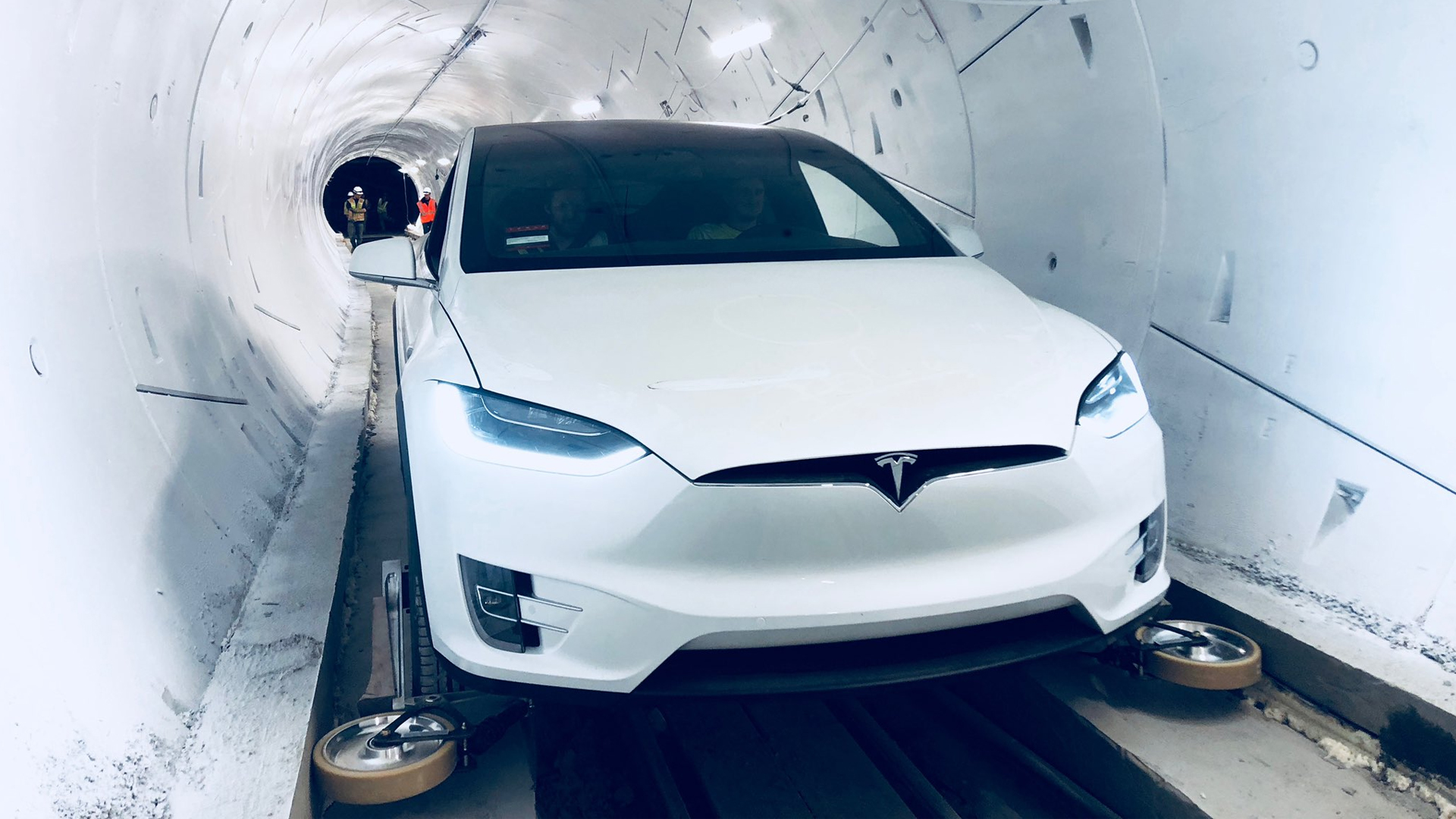

Elon Musk revealed the fruits of The Boring Company’s labor at its first official tunnel unveiling on Tuesday night. Costing more than $10 million to build the 1.14-mile tunnel under the streets of Hawthorne, California, the prototype tunnel is a concept of how Musk envisions the future of transportation in an attempt to alleviate crowded surface streets.
The above photo makes the tunnel appear larger than it really is. The Boring Company has been riding on the notation of its tunnel size being of the biggest money-saving measures that it could implement, reducing the overall diameter to cut construction costs and create the ability to “stack” tunnels in tight clusters. The tweet below gives us a look at what a Tesla Model X looks like zipping along inside of the tunnel; it helps to give a better idea just how close-quarters the bore really is. Claustrophobics beware.
“[The cars are] capable of traveling safely at over 150mph. At that speed, it will feel like teleporting within a city.” said Musk on Twitter, “All Boring Loops will include continuously circulating cars dedicated to pedestrians & cyclists.”
Something you might have noticed is that the Model X in the above video isn’t riding on a platform, but rather gliding across two perfectly placed concrete strips that are just wide enough to make contact with the vehicle’s tires.
In the past, The Boring Company expected to load a vehicle (or passengers) onto a large electric skate which would be lowered into the tunnel and transported to a pre-set destination. This concept has changed, as Musk revealed that the idea would now be to convert the vehicle itself into the skate by affixing guide rollers (which look like training wheels for a bicycle) to the vehicle and sending it along the track.
“The vehicle is the skate,” said Musk.
Musk calls the contraption a “wheel gear” and notes that the final product would be retractable. The wheel gear is affixed only at the front of the vehicle and is used to guide the car along the Loop’s rail system.
You might be wondering just how practical it would be for an electric car to be driving with these mechanisms protruding from the front corner, especially given the large turning radius of Tesla’s vehicles. Fortunately, that’s not how the wheel gears will function. The Model Xs that were tested at the event show prototypes of the final product. The actual wheel gears will be a future offering from Tesla for its vehicles and will be deployed from underneath the car, unfolding and locking into place only when being used in a Boring Company Loop.
Musk claims that this could be a factory option which costs somewhere in the neighborhood of $200 to $300 and could likely be available as an aftermarket part later on.
When asked if the concept is similar to a subway, Musk acknowledged that it was, except with more capacity and convenience.
“Subways are fine, but it’s time to upgrade to something better.”
The Boring Company still has a long way to go before it becomes viable and public facing, though it has landed some big-name projects to kick things off. The company notes that is working on new iterations of its tunnel-digging robot, Godot, in order to continue its digging ventures. Given the massive cost behind digging, it would not be surprising if the company needed to revisit its innovative fundraising strategies.